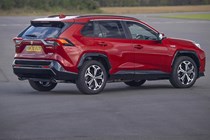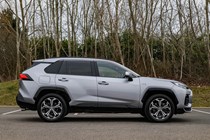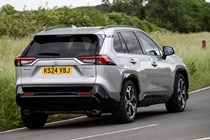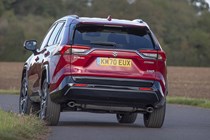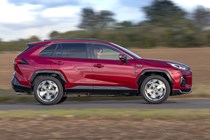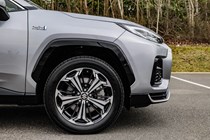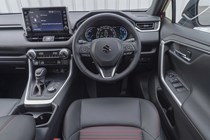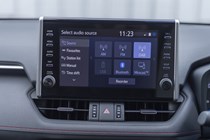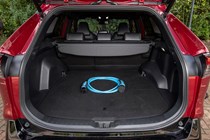Suzuki Across long-term test
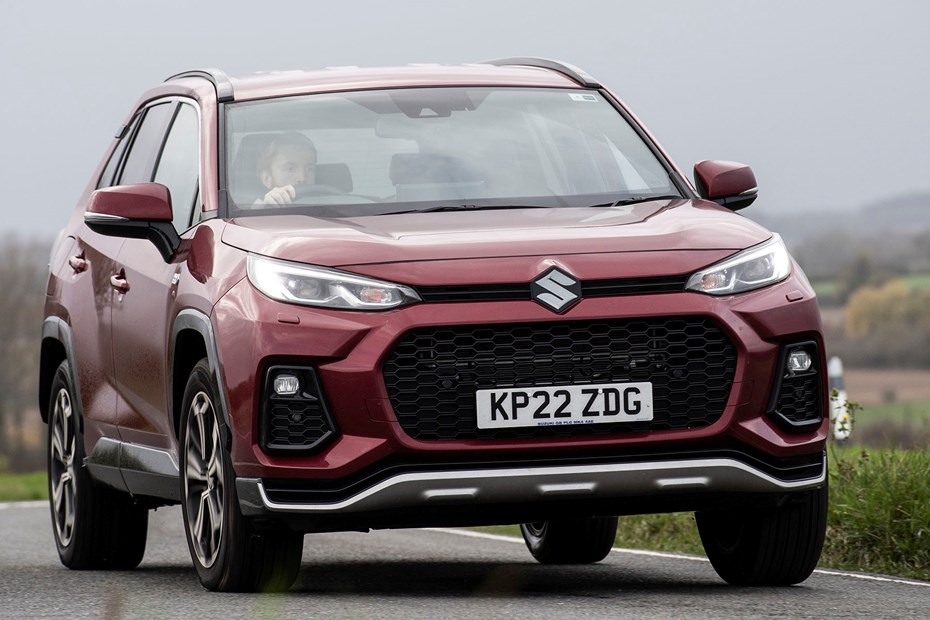
Murray Scullion on living with Suzuki’s most expensive car. This review is broken down into chapters – use the links below to navigate between them if you don’t fancy reading the whole article.
Update 1: Welcome
Update 2: Performance and handling
Update 3: Comfort and interior
Update 4: Would I recommend one?
Update 5: A second opinion
Update 1: Welcome
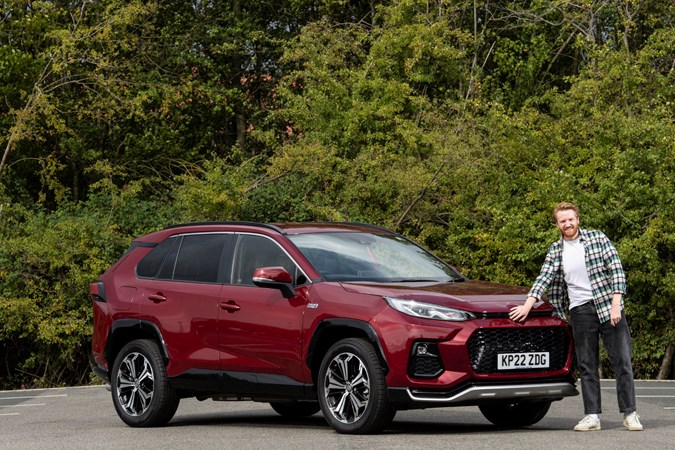
Is it ‘a *pause* cross’ or ‘aahcross’? Suzuki’s naming culture for the S-Cross would say firm a. But the fact it doesn’t have a hyphen means it should be pronounced aahcross. I’ve been flitting between the two.
But anyway. Here’s my new long-term Suzuki Across. Have you seen many of them around? Maybe you have, maybe you haven’t. That’s because it has a doppelganger.
Well not so much a lookalike. More like a twin. The Across is literally the same as the Toyota RAV4, bar a few badges.
The Toyota link
Essentially Toyota and Suzuki are helping each other out with emissions. Suzuki offers up small cars for Toyota, while Toyota repays the favours with large cars for Suzuki.
The Across has a slightly different grille, but other than that and the badges, it’s pretty hard to tell the difference between the pair.
Price
Before it arrived I thought I better look up the price. There’s only one spec and engine to choose from and it costs £46,629 at time of writing (September 2022).
The cheapest plug-in RAV4 starts from £44,140 while a top spec one costs a little less than £46,000. Bearing in mind that the Toyota comes with a 10-year warranty and the Suzuki only comes with a three-year one, I do think on paper the Across looks like a hard sell.
Spec
Don’t get me wrong. The Across is a big car, with a battery capable of covering up to 46 miles officially (more on that later) and also gets loads of kit:
- Adaptive cruise control
- Blind spot monitor
- Keyless entry
- Rear parking camera
- Electronic tailgate
- Heated seats
- Apple CarPlay/Android Auto
The list could go on. But there’s only one trim level and one engine to choose from, which means it’s a 2.5-litre petrol with a battery. First time I fire it up it has a full tank and a full battery. The driver’s display is telling me that it should be capable of doing 500 miles combined. Time will tell if that’s achievable on my commute.
First impressions
I love the Sensual Red we’ve gone for here. It really helps it stand out. I’m gelling with the overall design too. It’s sharp in all the right places and the dark trim makes it look suitably off-roaderish.
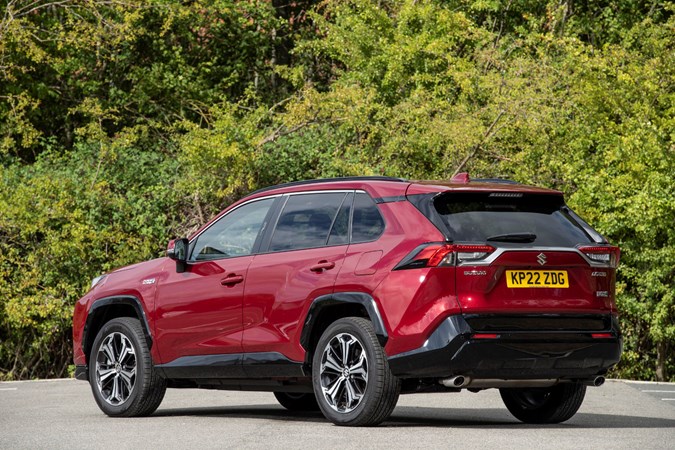
Inside the seats look a bit cheap with their red stitching. The infotainment screen looks a little old – especially the graphics – but it did hook up to my iPhone for Apple CarPlay instantly and smoothly.
Let’s see if over time the Across can wow me and make me think that it’s worth the price tag.
Performance and handling
Opinions, I have some. If you’ve dissected this review front to back you’ll already know the key figures. 302hp, 0-62mph in six seconds, 282mpg.
On paper they look great. In reality, they can prove a bit different. You see *pushes imaginary glasses up my nose* the car’s performance is greatly dictated by how much battery you have.

If it’s full of Europe’s most expensive electricity, the Across has a real turn of speed in its arsenal. A six second 0-62mph time is nothing to be sniffed at, and it easily feels this quick. I ran a Volvo XC90 T8 PHEV with 390hp for six months, and the Suzuki feels just as eager off the line.
The driving modes make a real difference here. Switch it from Eco to Sport via the old-school red button and pick-up and response improves. Acceleration tails off once you get past the 60mph mark. But even from 20 or 30mph it’s impressive. Great for accelerating onto a slip road, away from a set of lights, or while overtaking on a tight country road.
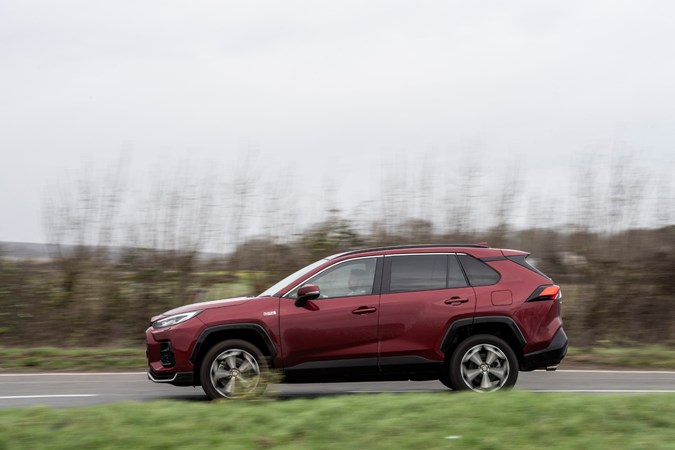
When the battery is depleted it’s a slightly different story. Off the mark, without the initial surge of the electric motors, it’s noticeably slower and louder. It’s still not slow, but there’s less oomph. You’ll feel this most notably from a standstill. While leaving a roundabout for instance.
How about the handling?
After about 1,000 miles I can confirm the handling is fine. There’s a healthy amount of roll should you enter a roundabout too quickly, and the steering is a touch too light for my liking. But apart from this there are very few complaints.
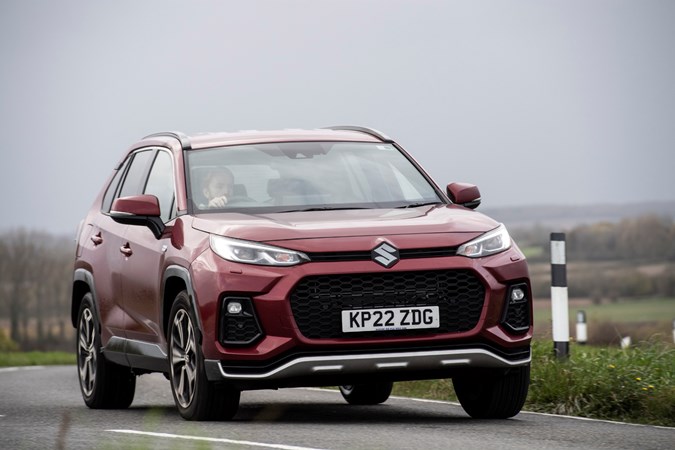
At 30mph and below it’s very easy to use, and at parking speeds it’s particularly impressive. I have to parallel park at home and it’s never a chore. The steering is light and there is never any see-sawing at the wheel, guessing how much lock I need to put in.
Update 3: Comfort and interior
Two sections with two different outcomes here. Let’s kick things off with the positive; the comfort. My girlfriend rates a car on how easily she can fall asleep in it (which probably says something about my conversation skills) and she scores the Across very highly.
Despite the car’s height and weight, at motorway speeds very few vibrations leak into the cabin. Wind and road noise is kept at bay, and it deals with minor imperfections on the road well. There is a bit of boatiness going on with big potholes, but it’s a small price to pay for its impressive ride.
Low speed is impressive too, especially when in fully electric mode. Serenely floating to the shops just on electric power is a delight, but when the battery’s empty there is a fair amount of racket from the engine at low speed.
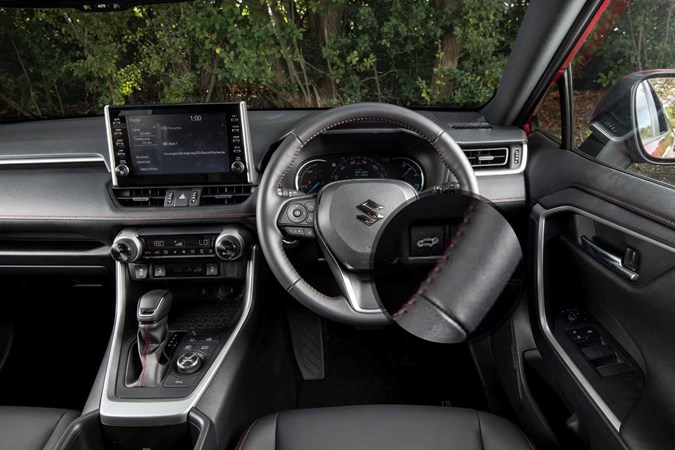
The interior is more pragmatic than it is pretty. The switchgear is all carried over from the Toyota RAV4, which means it won’t break. But it won’t delight either. The plastics you touch day-to-day are scratchy and there is a bit of a scattergun approach to the button placement. For instance, the boot opening button is directly where my right knee is (pictured).
While I’m complaining about ergonomics, I also find it particularly easy to nudge the auto mirrors button when I’m exiting the car. This is annoying as when I inadvertently do this, I go to lock the car and the mirrors don’t fold in, making me think I’ve not locked the car, even though I have.
Update 4: Would I recommend one?
A recent holiday to South Africa helped add a bit of perspective. Remember earlier when I mentioned the Suzuki/Toyota link? Well I’ve now sampled the other end of the deal.
I covered about 250 miles behind the wheel on a Toyota Urban Cruiser XS (pictured). This is a rebadged Suzuki Vitara Brezza with a 1.5-litre mild hybrid petrol engine and a five-speed manual box. It’s slow, thirsty and the interior plastics were much much worse than the Across. In other words, in the UK we seem to be on the right end of the Suzuki/Toyota deal.
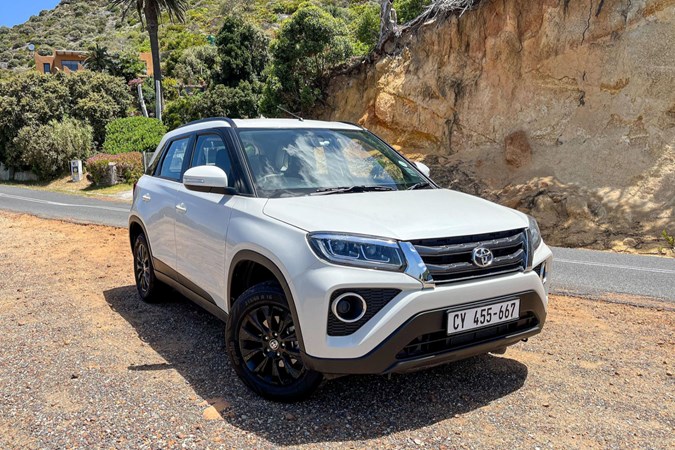
And the Across (or is that aahcross?) has wormed its way into my affections, mostly because of its comfort and economy.
If the Across winds up on your company car list and you want a practical family hauler that you can charge from home, I would recommend one. If you’re a private buyer it’s a tougher sell because the nearly-identical Toyota RAV4 is cheaper and comes with a longer warranty.
Update 5: A second opinion
I handed the keys to Staff Writer Luke Wilkinson for a couple of weeks to see what he thought. Scroll down for his thoughts.
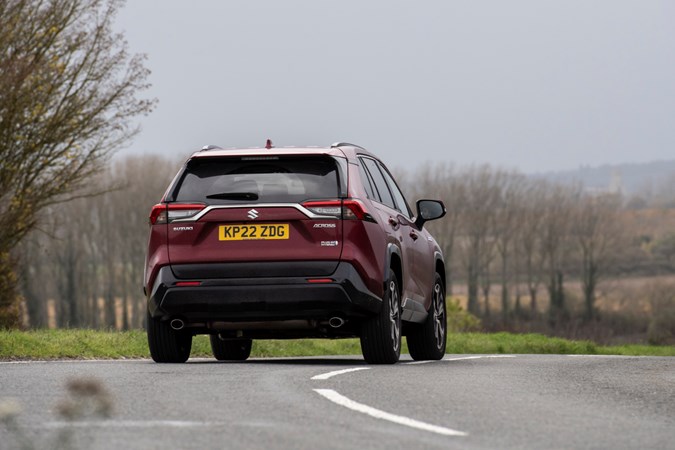
When I picked up the car, southern England was being battered by monsoon-like rainstorms. However, I couldn’t sit at home and hide from the inclement weather because my girlfriend’s family was visiting from Finland – and I was drafted in as their chauffeur.
We collected them from Heathrow Airport. On the way there, the Across fought through a storm heavy enough to bury small hatchbacks. The inside lane of the North Circular was submerged under a foot of water and the rain streaming over the windscreen was thick enough to block my vision.
The Across took it all in its stride, though. I used the car’s ‘Trail’ function, which activates the electric motor on the rear axle to give you four-wheel drive and automatically brakes each wheel to limit slip. I was dumbstruck by how easily the car ploughed through standing water. I doubt I would have managed the same journey quite so effortlessly in my old long-term S-Cross.
I’m glad the Across inherited the RAV4’s practicality, too. There’s loads of space inside for four passengers and a boot full of luggage. Also, because there’s no driveshaft running down the middle of the car, the central tunnel is small – so there’s plenty of legroom and foot space in the back. My girlfriend’s dad is six foot five with size 14 feet, and he never complained about being cramped.
Murray touched on this in an earlier report – and I’m keen to pick up the mantle. Yes, the Across is only available with Toyota’s most powerful 306hp plug-in hybrid powertrain (which jacks up the price), but £47,000 feels like an awful lot of money to spend on what’s basically a second-hand car.
Let’s just hope that enough office-going business types take Suzuki up on the offer. Then, once their company car deals are up for renewal in a few years’ time, we’ll hopefully see a glut of low-mileage Across SUVs hitting the used market – and that’ll be the perfect time for you and me to slap down some cash and bag a bargain.



